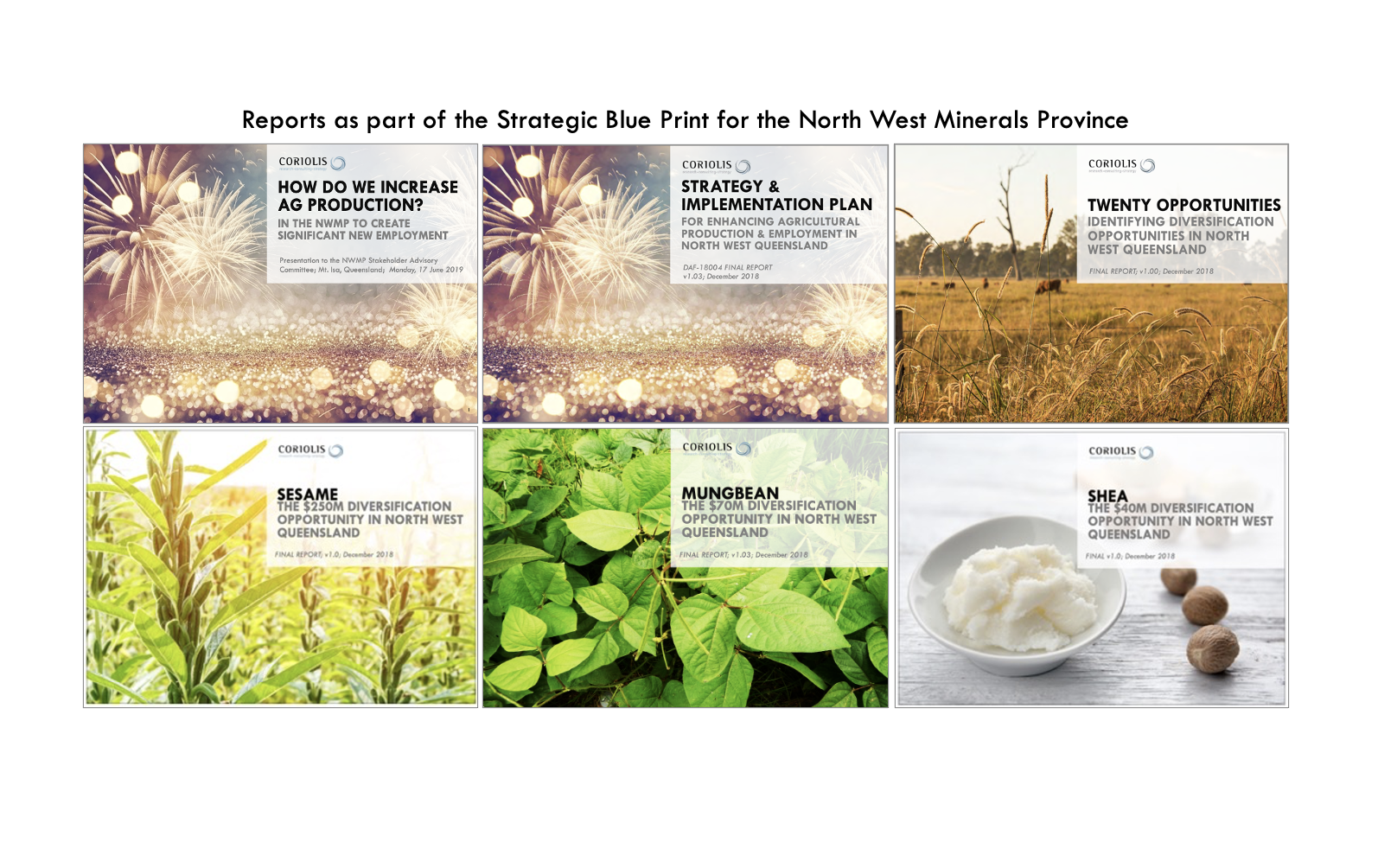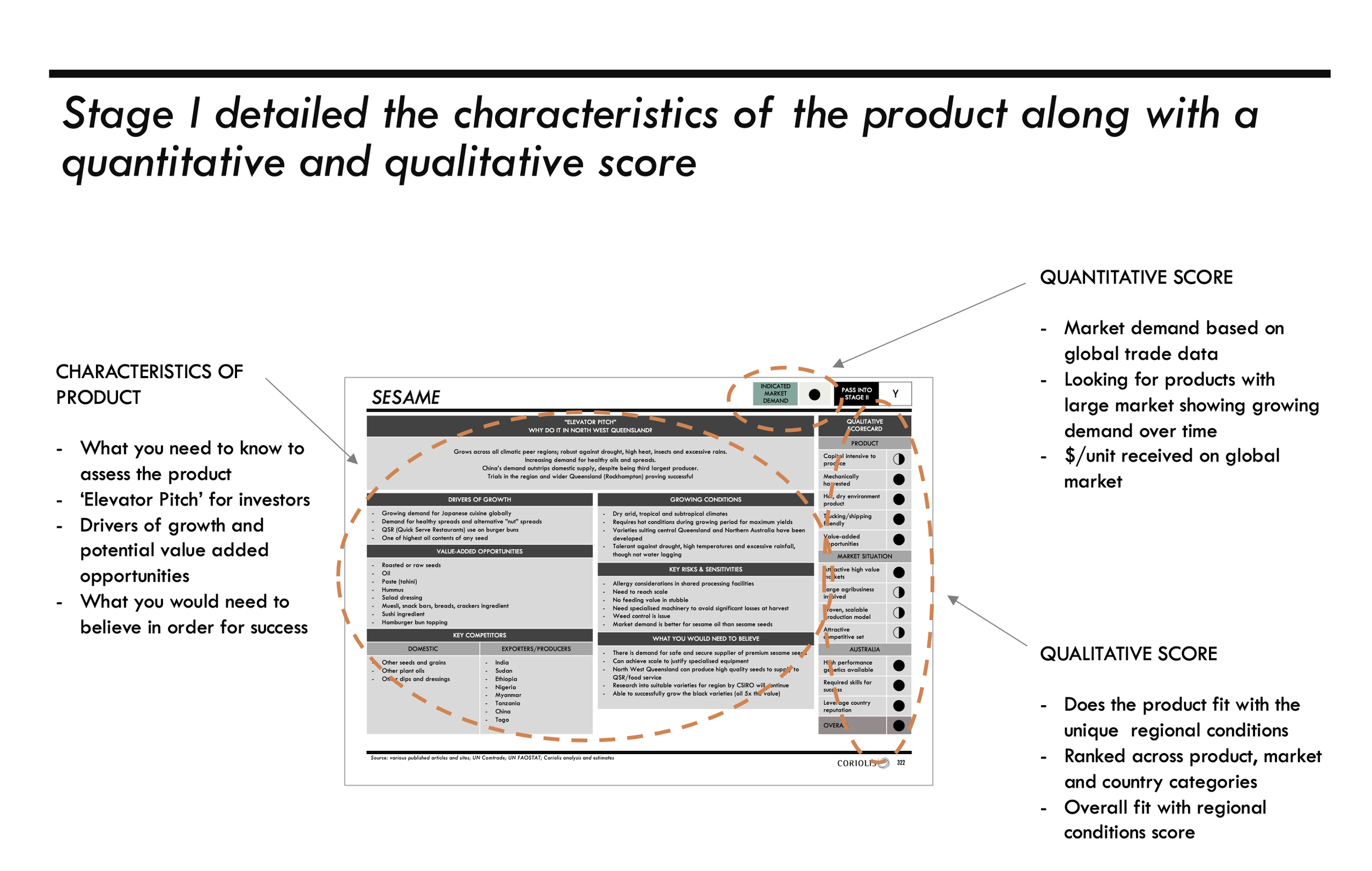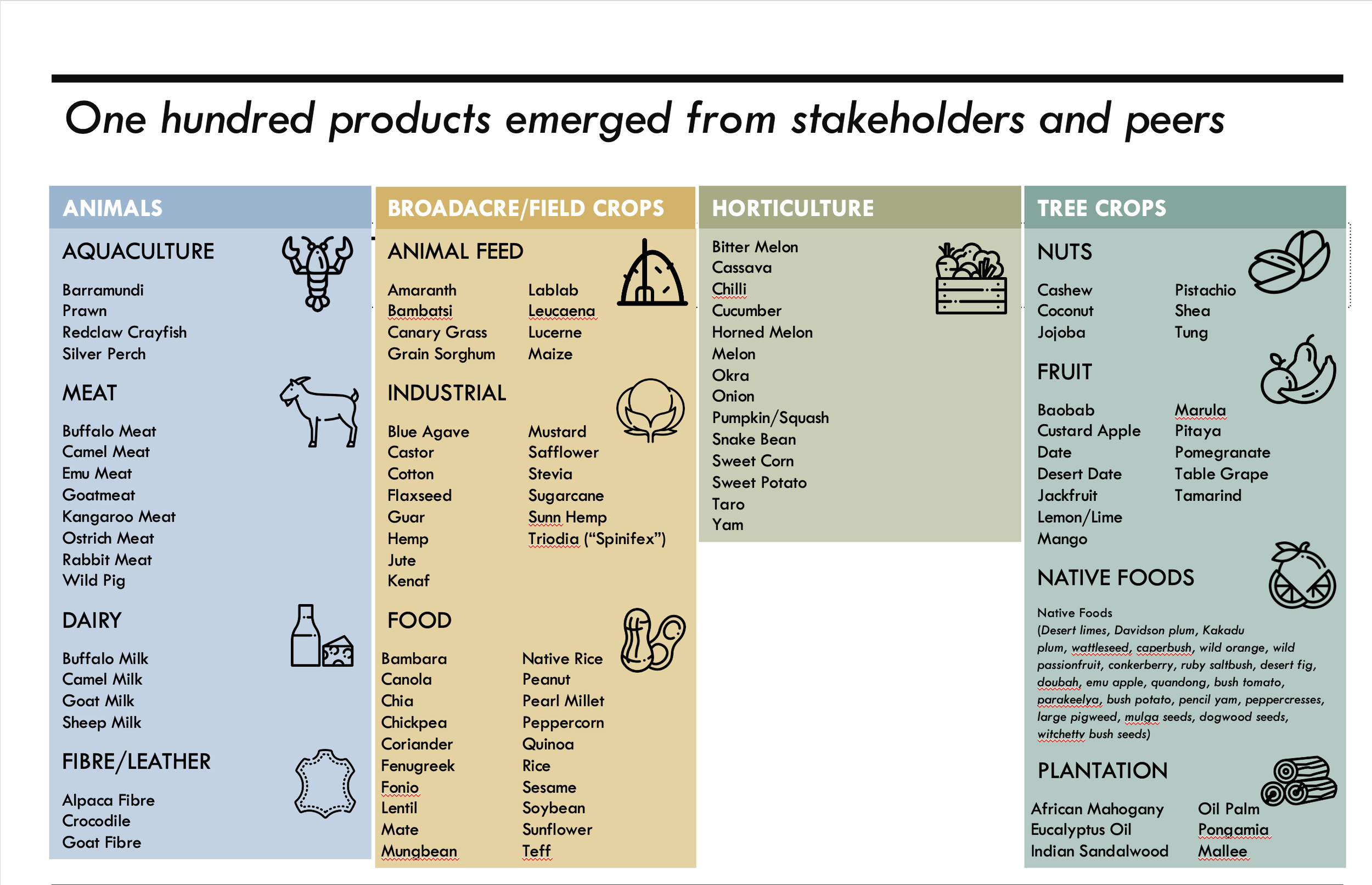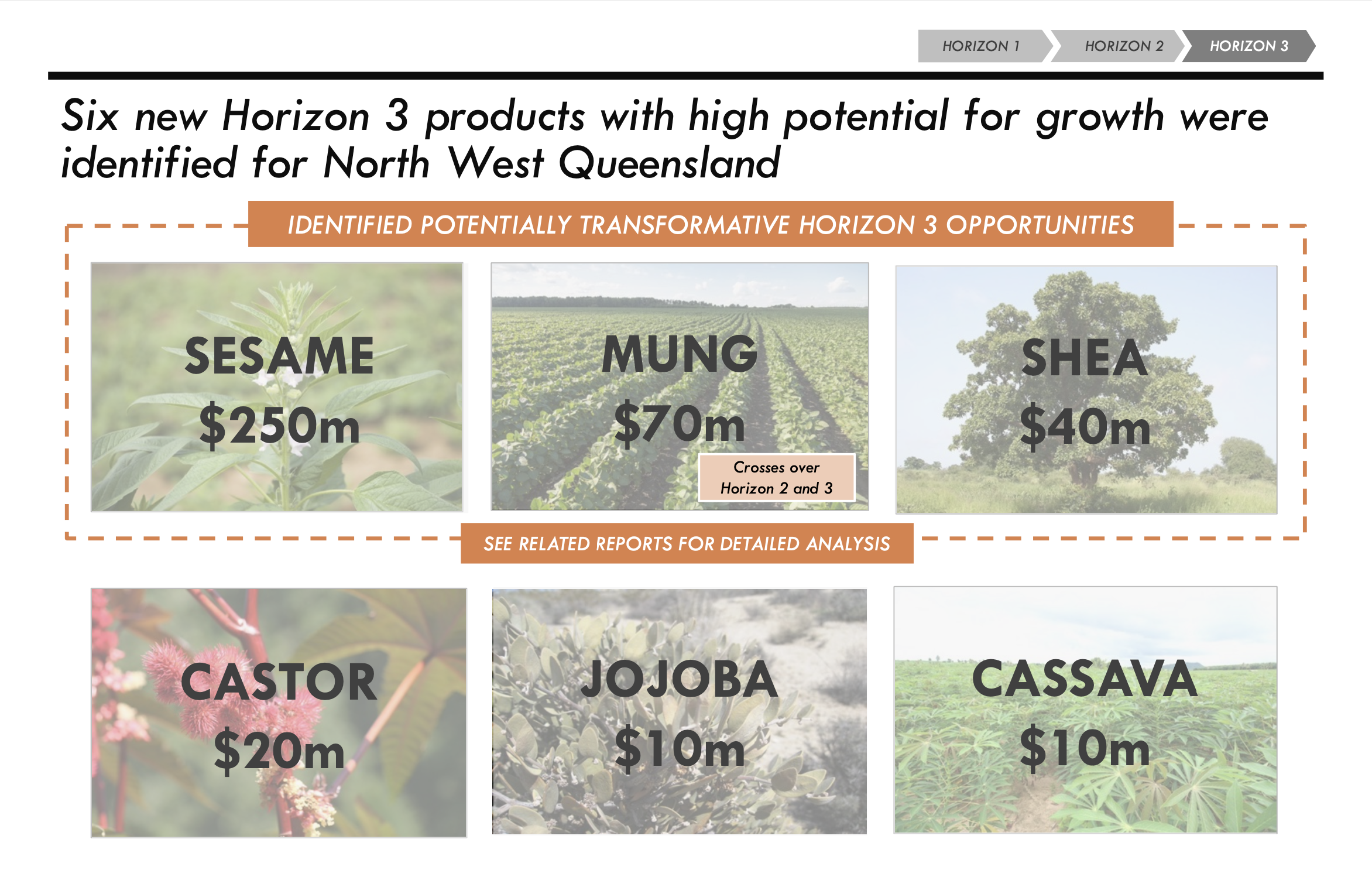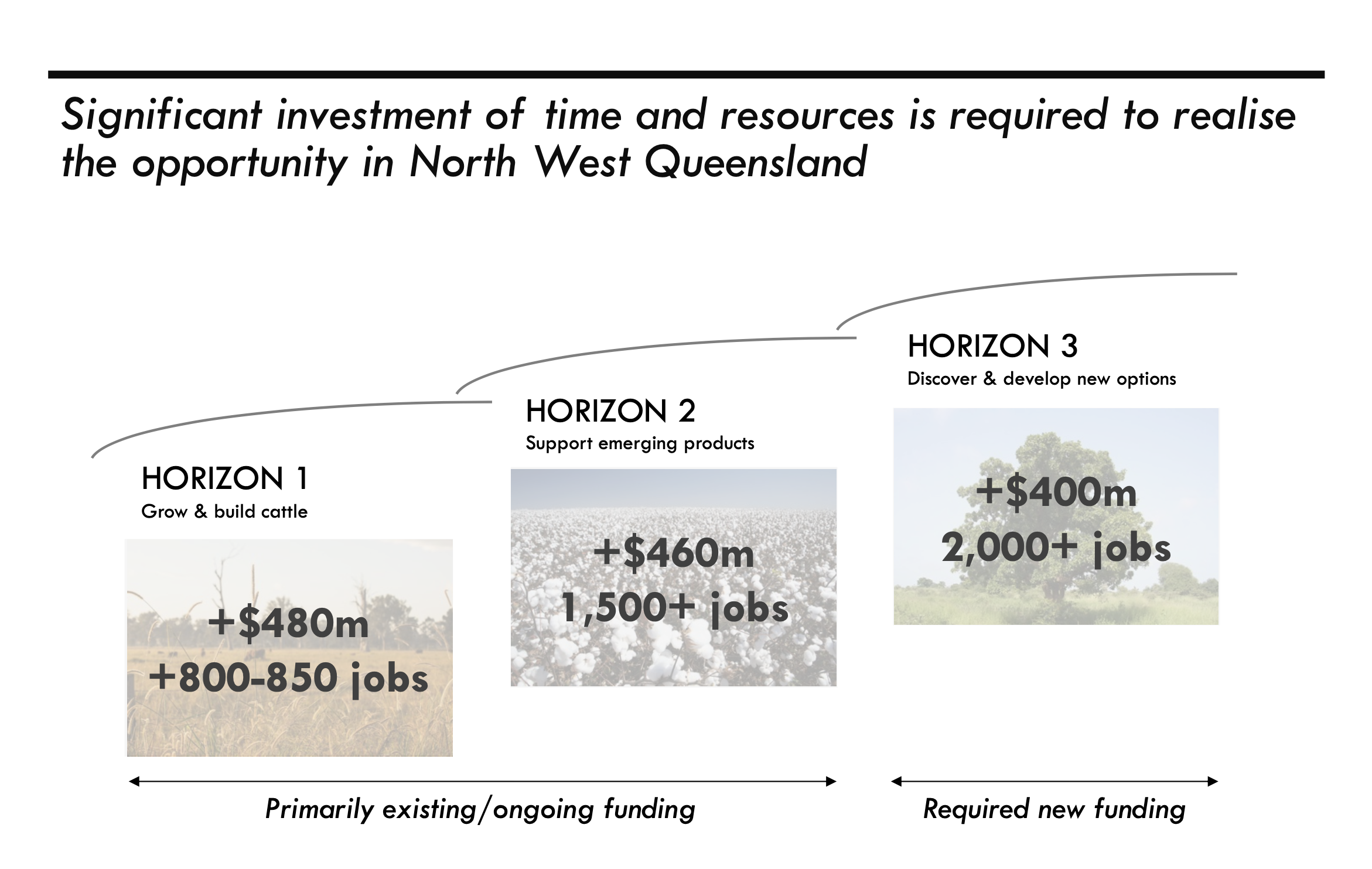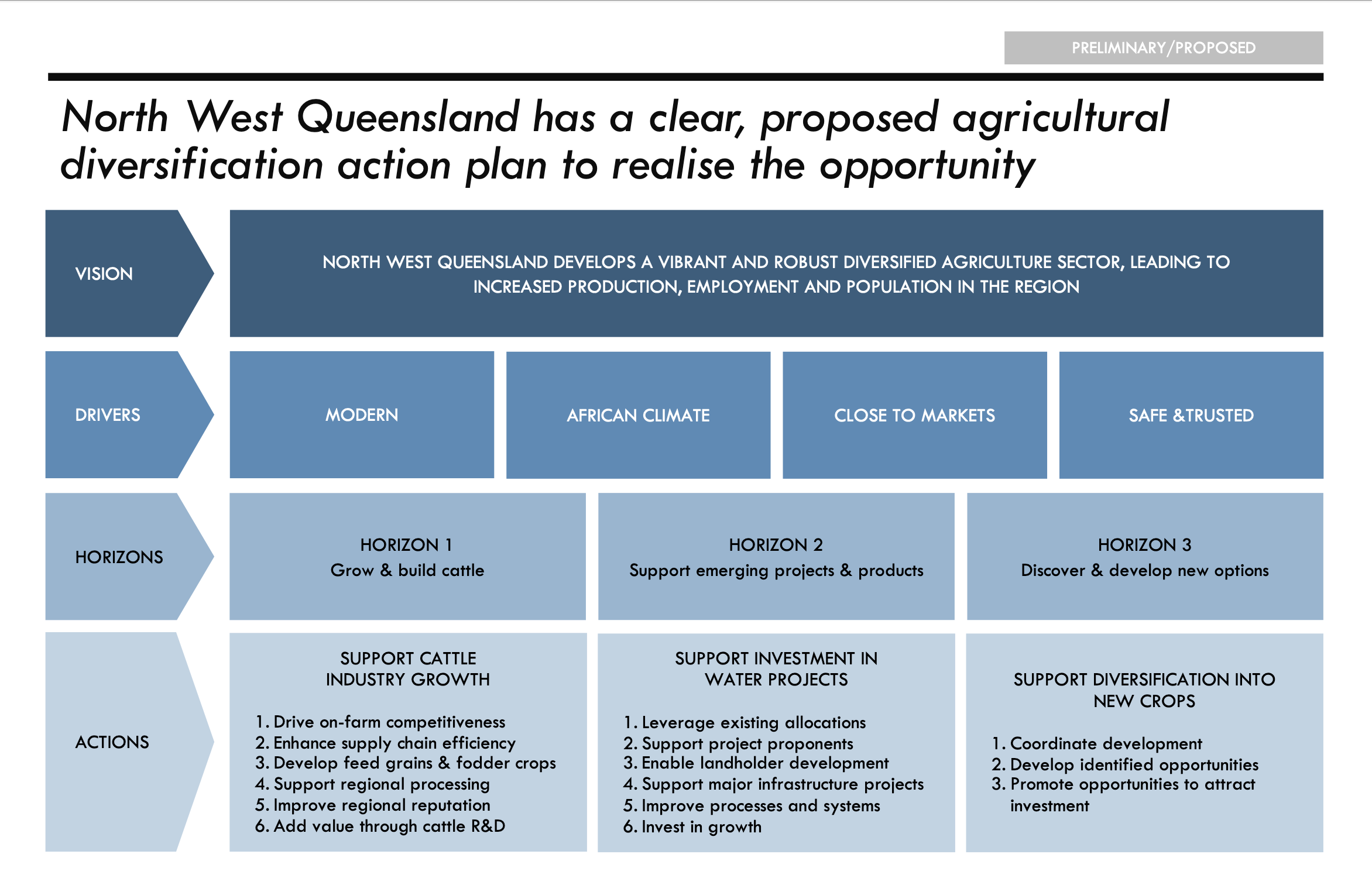CASE STUDY
North West Queensland seeks a strategy and implementation plan for new agricultural products
Client
Problem
The North West Minerals Province in Queensland faced a pressing challenge: its economic reliance on mineral resources left the region vulnerable to global commodity cycles. With limited sector diversity, the region needed a “Plan B”—a long-term strategy to unlock new sources of growth, investment, and employment.
The Strategic Blueprint identified Agriculture as a key opportunity. However, existing activity in the region was minimal and primarily limited to extensive cattle grazing, with little crop production and limited value-added processing.
The question was clear: How can agriculture be expanded, diversified, and intensified in one of Australia’s most challenging climates?
Solution
Through a competitive tender process, Coriolis was selected to develop a comprehensive strategy and implementation plan focused on building the region’s agricultural potential.
Our scope was clear:
“Develop a long-term strategy and implementation plan for enhanced agricultural production and employment, focused on expansion, diversification, and intensification.”
Coriolis was chosen for our unique methodology, deep sector expertise, and track record of delivering practical, region-specific strategies. Our approach combined global benchmarking, rigorous product screening, ground-level engagement, and commercial insight to identify real opportunities—and build a plan to activate them.
What we did
This project combined both multiple situation assessments and a screen.
1. Situation Assessment: Setting the Scene
We began by assessing the current landscape of agriculture in the region:
What was already working?
What constraints existed (climate, infrastructure, logistics)?
Why was a strategy needed now?
This Situation Assessment provided the foundation for the strategy, highlighting the gaps and opportunities in existing agricultural activity.
2. Product Screening: Identifying Opportunities
A multi-stage screening process was conducted to identify high-potential crops that:
Could thrive in North West Queensland’s semi-arid climate
Were in growing demand in national and international markets
This involved:
Benchmarking 14 global climatic peers (e.g. Burkina Faso)
Compiling a longlist of 100+ candidate crops
Applying qualitative and quantitative filters to assess agronomic fit, market potential, value chain maturity, and scalability
From this, 20 attractive product candidates emerged, with 3 shortlisted for deep-dive analysis.
3. In-Depth Opportunity Assessment
We evaluated the top three candidates in detail:
Sesame – a $250M opportunity
Mung beans – a $70M opportunity
Shea nuts – a $40M opportunity
Each crop was assessed across agronomic feasibility, supply chain requirements, commercial interest, and readiness for scale.
4. Regional Engagement
Extensive on-the-ground engagement was carried out across a region three times the size of Germany. Interviews were held with:
Growers
Local government
Industry stakeholders
Local communities
Infrastructure providers
These insights grounded the strategy in practical realities and regional knowledge.
Total regional population in NW Queensland has been declining since the mid 1970s; longer for some areas.
Source: wide range of ABS (and predecessor organisation) publications; Coriolis modelling & analysis
The project used a multi-stage screening process to identify products with high growth potential.
Output
The project delivered five key reports:
Regional Situation Assessment
Product Screening Results
Three Crop-Specific Situation Assessments
Strategy & Implementation Plan
Each report built on the last, creating a cohesive and evidence-based framework for regional agricultural development.
Outcomes
Reports alone don’t drive change—action does.
The true outcome of this project was real-world implementation, with multiple crop trials planted across Queensland. Growers, investors, and government stakeholders used the strategy to inform investment decisions, validate new crop potential, and activate on-the-ground diversification efforts.
“The value in this project was we were then able to secure funding going forward for implementation.”


